Cercle Paul Diel
Suisse Romande
Cercle Paul Diel
Suisse Romande
Biography of Paul Diel
Translation / Traduction : Richard Jacklin © 10.2010
All rights reserved / Droits réservés.
Paul Diel was born 11th July 1893 in Vienna to his German mother, Marguerite, who was a French teacher, and an unknown father.
At first, the infant Paul was placed with a foster family, and at the age of four was then transferred to a religious orphanage near Lainz, an establishment the adult Diel would remember as the “house of torturers”. His mother came to see him whenever she could, but not often enough. The child, feeling terribly lonely, abandoned, avoided despair and rebellion by clinging to the certainty that his mother, the love of whom was his only support, would come for him one day.
At the age of eleven he entered school, avidly devouring adventure novels in which the heroes, role models of courage and fighting spirit, fired his imagination.
In June 1906, just before his thirteenth birthday, his dream finally came true: his mother came and took him away from the orphanage. So began a year of freedom and play which was cut short just after the return to school in 1907, when his mother succumbed to cancer, and Paul Diel found himself alone in the world.
The young adolescent was given lodgings by the family of a friend, until he was taken in hand by a lawyer friend of his mother’s, who became his legal guardian and put him once more in a foster home. Diel formed a bond there with a boy who initiated him to physics and mathematics, and deeply influenced his choices. Many years later, the memory of this friend served Diel as an example of one of his categories of false motivation, the desire for recognition.
Only studying those subjects which interested him, Paul Diel failed his baccalaureate. Tired of studying, he managed to find work as an accountant’s assistant with the help of his guardian. However, poorly motivated, he was laid off after a few months. Not wishing to disappoint his guardian, Paul hid this fact from him, left the foster home and found himself again on the street.
As an 18 year old vagabond, Diel wandered Vienna, where he frequented the cafés and libraries. He did occasional work here and there and, eventually falling ill, found himself in hospital, where he had a bed, hot meals and the peace and quiet he needed for his reading.
A year later in 1912, he returned to his guardian, and passed his baccalaureate with distinction. Nevertheless with his aversion to disciplined work, he refused to admit himself into the university, and was drawn to writing poetry. His guardian found him an administrative job at Hitzing, but Diel seized his “freedom” and disappeared, returning to his marginal existence.
In 1914, gravely wounded during a duel by a student whom he had offended, Paul Diel refused medical attention, but was finally hospitalized urgently following a septicaemia. At the beginning of this summer, with most surgeons already called up to war, a botched operation caused complications which required further interventions.
This prolonged his hospitalization, from which Diel profited by acquiring a good understanding of philosophy, being particularly taken with Kant and Spinoza. He also wrote more poetry. However, it became more and more obvious to him, that the question as to how to live a fulfilling life was not answered in any of his readings.
He was not to leave hospital until a year and half later, at the age of 22, with his elbow paralysed. Declared unfit for military service, he found himself in civilian life. Unable to play sport, he discovered the theatre and decided to concentrate on this and writing poetry.
Paul Diel became an actor, and managed to earn a living from it. His writings bore witness already to his major preoccupations: the meaning of life, love, the sacred, the mind-matter duality, the reconciliation of external success and essential preparedness. Little by little, he acquired the status of a professional actor, often taking star billing, and he founded a troupe, which unfortunately broke up after a year, owing to lack of funds. Finally, Diel found repertory work in the provinces and pursued his literary career, tracts on dramatic art, plays, novels and poems.
In 1922, during a tour of northern Italy, he met Jane Blum, a young Frenchwoman of Jewish origin. Both of them fell deeply in love and decided never to part. After a markedly precarious beginning of a life together the couple arrived in Paris and were married.
Paul Diel, rejected frequently in France because of his Germanic origins, didn’t manage to get his plays produced and his wife fell ill. The couple left for Austria. There, Diel discovered the new field of modern psychology, most notably through the work of Alfred Adler. His future predilections starting falling into place: desire, unconscious motivations, vanity and exhilaration, and the search for interior harmony.
The couple’s situation was no better in Austria than in Paris. While Paul found work as an insurance salesman, his wife left for Paris, where she was given board and lodging by a friend. The couple were together only sporadically through a long distance relationship until 1930, when Jane Diel returned to her husband in Austria.
From 1928, Paul Diel studied courses in psychiatry. He expanded on Freud’s notion of “repression”, and seized on Adler’s notion of the desire for self-esteem as central elements in the formation of personality, and integrated them into his own theoretical vision. He had found his path, and renouncing literary and artistic expression, began to write his first work on the subject of psychology, “Phantasie Und Realität” (Fantasy and Reality), wherein can already be seen the foundations of his future work, the Psychology of Motivation: the introspective approach, desire as a central component of drives, imaginative exhilaration, guilt and sublimation.
Diel finished the manuscript of “Phantasie Und Realität” in 1933, and sent it to several publishers, Austrian, German and Swiss. Owing to the worsening political situation in Europe, the response was slow or negative, and the work was judged “too far removed from the problems of the time”. Sigmund Freud himself, overloaded with work, refused to read the work of an unknown.
In 1934, civil strife broke out in Vienna. Diel who had begun his second work, entitled “Geist und Gute” (Spirit and Goodness), lost his work as an insurance salesman, fell ill, and was hospitalized.

Albert Einstein (1879-1955)
[Photography: Deutsches Bundesarchiv (German Federal Archive), Bild 183-19000-1918]
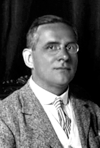
The two men arranged a meeting on 22 June 1936 to make arrangements to contact publishers. That very evening, Schlick was murdered, the endorsement destined to accompany Diel’s manuscript in one of his pockets.
Moritz Schlick (1882-1936) [Photography: Theodor Bauer / Österreichische Nationalbibliothek]

Emil Froeschels (1885-1972)
[Photography: http://www.acsu.buffalo.edu/~duchan/history_subpages/emilfroeschels.html]
Anti Nazi from the start, the Diels began to realize how this position, advantageous to begin with, was becoming more and dangerous since the murder of Chancellor Dollfus. In 1938, German troops overran Austria. It was time to leave. The growing difficulty of the political situation, was compounded by new financial woes.
Still penniless, the Diels finally accepted the fact they could no remain in Vienna and managed to leave the country under the pretext of a two month visit to Jane’s family in Paris. They took only two suitcases with them, some personal effects, the manuscripts of Phantasie und Realität and Geist und Gute, the regulation sum of 30 marks and the secret hope of finding political asylum in France.
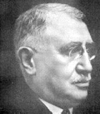
Henri Claude (1869-1946)
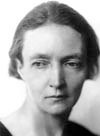
Irène Joliot-Curie (1897-1956) [Photography: http://www.nobelprize.org]
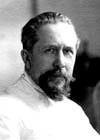
Maxime Laignel-Lavastine (1875-1953)
[Photography: © BIUM (Paris) / http://web2.bium.univ-paris5.fr/img/img_rech.htm]
Following the German invasion of May / June 1940, Paul Diel found himself gathered together with other foreigners of German origin at the Colombes stadium near Paris, by decree of the new Vichy government. Several days later, a new Vichy decree found the husbands of Frenchwomen liberated. Having missed this opportunity thanks to a moment of inattention, Diel soon found himself deported to one of the French-run internment camps, the Gurs camp in the Atlantic Pyrenees, where he wrote a short text about human relations being poisoned by unthinkable provocations, “Le coup d’epingle” (The last straw).
It was in these inhuman conditions that Diel elaborated his work on the symbolic language of myth and the psychological meaning of God, “La Divinité et le héros” (Divinity and the Hero), later entitled “Divinité”.
In 1943, he developed his exposé “Thérapie” which soon would become “Psychologie de la Motivation” (The Psychology of Motivation) but he fell seriously ill.
Visited several times by his wife, whom he had not seen for three years, he managed to receive a special dispensation, a little more freedom and a dilapidated lodging with no heating. His living conditions were gentler, and Diel took advantage of this to deepen his theory of psychological calculus and false motivation.
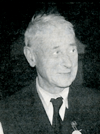
Henri Wallon (1879-1962) [Photography: http://hmenf.free.fr/rubrique.php3?id_rubrique=53]
His post at the CNRS, and more than ever, the support of Einstein and Wallon – whom Diel considered the fourth most important psychiatrist after Freud, Adler and Jung – finally allowed Diel to publish his first work. “Psychologie de la Motivation” first appeared in 1948 in the “Collection de philosophie contemporaine”, edited by Maurice Pradines, published by Presses Universitaires de France (PUF - University Press of France). Other works would follow. Diel was fifty five years old.
This first publication brought him an audience and students to whom he taught his method, in the form of therapy, conferences, seminars and courses of lectures.
“La Divinité et le héros” became “La Divinité” and “Le Symbolisme dans la Mythologie Grecque”, respectively published in 1950 (PUF) and in 1952 by Editions Payot, the latter glowingly prefaced by Gaston Bachelard.
With Payot thenceforth, followed “La Peur et l’Angoisse” (Fear and Anxiety) in 1956, and “Les Principes de l’education et de la re-education” (The principles of education and re-education) in 1961, “Le journal d’un psychanalysé” (Diary of a psychoanalyst) in 1964, “Psychologie curative et medicine” (Curative psychology and medicine” in 1968, and finally “Le Symbolisme dans la Bible” (Symbolism in the Bible) and “Le Symbolisme dans l’Evangile de St Jean” (Symbolism in the Gospel of St. John) in 1975 and 1983 respectively.
Paul Diel was awarded a “prix de l’académie française” for his work “La Peur et l’angoisse” (Fear and Anxiety”, thanks to André Chamson, and corresponded with Adolphe Ferrière, when he was refused a seat at the “Collège de France”.
In 1964, he created in Paris, “L’Association de Psychologie de la Motivation”.
In 1968, when academic and medical institutions no longer respected his work, Paul Diel was no longer able to be heard by students.
His death, 5th January 1972, passed almost unnoticed in public, a fact which was noted with regret by André Chamson on the front page of the newspaper Figaro.
accueil qui sommes-nous annonces paul diel archives agenda liens plan du site contact
© 2009-2014 | Cercle Paul Diel Suisse Romande | 16a, avenue Ernest-Pictet | 1203 Genève | 079 364.15.01 | cpdsr.org